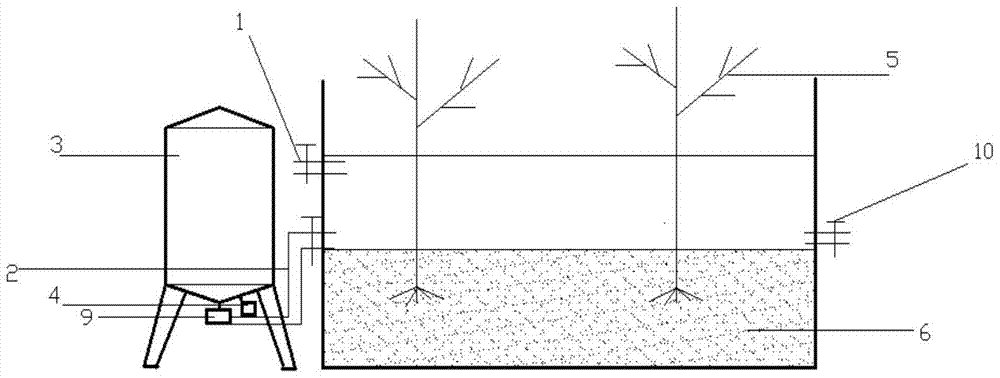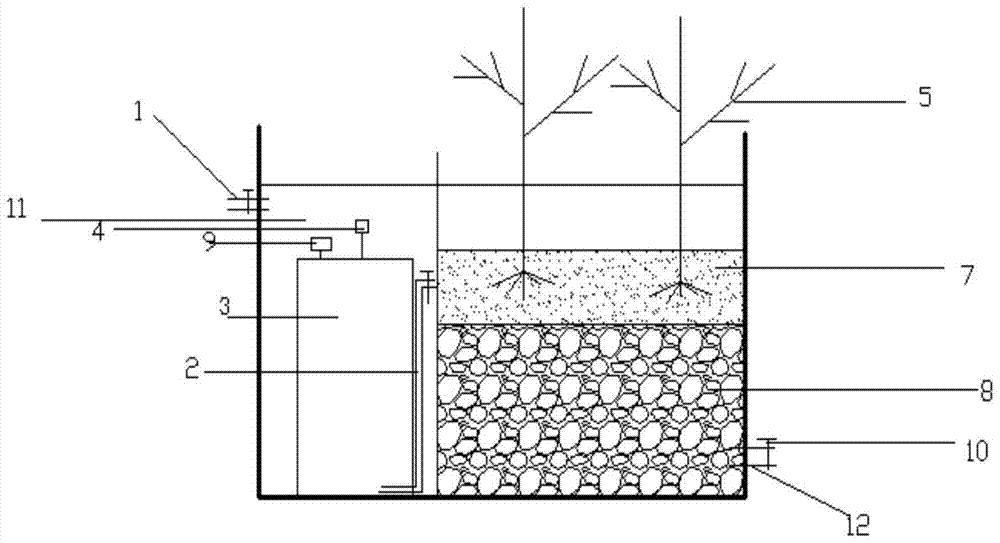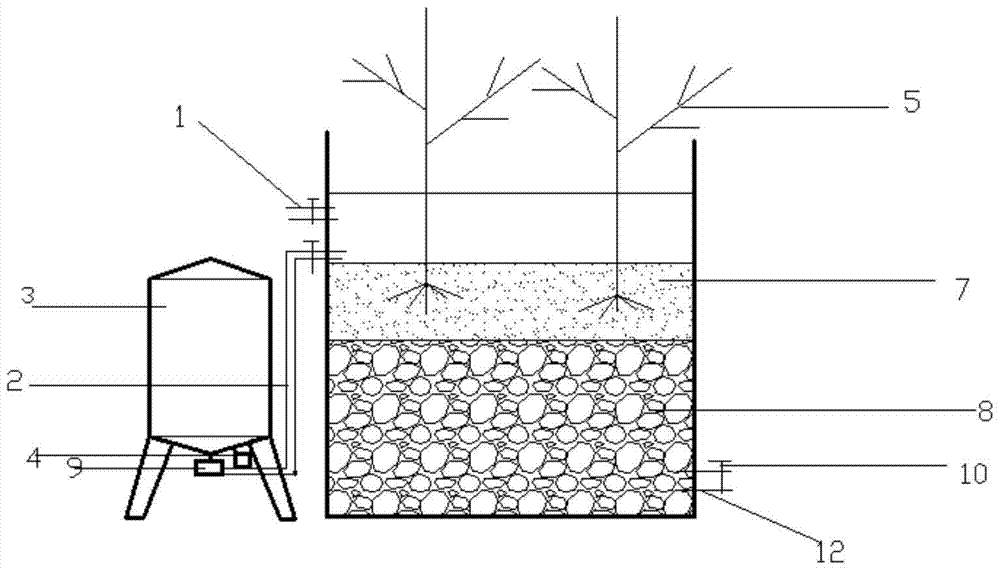Method for purifying domestic sewage with low carbon-nitrogen ratio by biological fermentation coupling artificial wetland system
A constructed wetland system and a technology for constructed wetlands, which are applied in the field of biological fermentation coupled with constructed wetland systems to purify domestic sewage with a low carbon-nitrogen ratio, can solve the problems of waste of resources and energy, poor nitrogen removal effect, and increase the cost of sewage treatment. The effect of improving nitrogen efficiency and saving floor space
- Summary
- Abstract
- Description
- Claims
- Application Information
AI Technical Summary
Problems solved by technology
Method used
Image
Examples
Embodiment 1
[0046] A method for purifying domestic sewage with a low carbon-to-nitrogen ratio by a biological fermentation coupled artificial wetland system, comprising the following steps:
[0047] Such as figure 1 As shown, this embodiment is a constructed wetland coupled microbial fermentation system formed in series by a biological fermenter 3 and a surface flow artificial wetland treatment system. The biological fermenter 3 is equipped with straw and composite bacterial agents, the fermenter is sealed, and the fermenter The air treatment system 4 is used to control the gas exchange of the fermentation tank, and the flow meter 9 adjusts the flow of the fermentation liquid to make the sewage mixed to achieve a reasonable carbon-nitrogen ratio. The flow meter 9 is connected to the surface flow constructed wetland treatment system through the outlet pipe 2. The constructed wetland treatment system is set up as a rectangle, and its matrix layer is all a mixture 6 of pastoral soil and yell...
Embodiment 2
[0056] Such as figure 2 As shown, this example is an integrated biological fermentation coupling artificial wetland system in which the biological fermentation tank 3 and the horizontal subsurface flow wetland treatment system are connected in series. In this system, the biological fermentation tank is immersed in the sewage mixing tank 11, which greatly saves the system. It occupies a small area and is conducive to maintaining a constant temperature in the fermenter. The biological fermentation tank 3 is equipped with straw and compound bacterial agent, the fermentation tank is sealed, the air treatment system 4 of the fermentation tank is used to control the gas exchange of the fermentation tank, and the flow meter 9 is used to adjust the flow rate of the fermentation liquid so that the sewage is mixed to achieve a reasonable carbon-nitrogen ratio. The lower part of the matrix layer of the horizontal subsurface flow constructed wetland treatment system is filled with a gra...
Embodiment 3
[0065] Such as image 3 As shown, in this embodiment, the biological fermentation tank 3 is connected in parallel with the vertical subsurface flow constructed wetland treatment system to form a constructed wetland coupled microbial fermentation system. The biological fermentation tank 3 is equipped with straw and compound bacterial agent, the fermentation tank is sealed, the air treatment system 4 of the fermentation tank is used to control the gas exchange of the fermentation tank, and the flow meter 9 is used to adjust the flow rate of the fermentation liquid so that the sewage is mixed to achieve a reasonable carbon-nitrogen ratio. The lower part of the matrix layer of the vertical subsurface flow constructed wetland treatment system is filled with gravel 8 with a thickness of 90 cm to 100 cm, and the upper part is covered with pastoral soil layer 7 with a thickness of about 15 cm to 25 cm. The microbial fermenter 3 is buried at about 30 cm.
[0066] When the system is r...
PUM
| Property | Measurement | Unit |
|---|---|---|
| particle diameter | aaaaa | aaaaa |
| thickness | aaaaa | aaaaa |
| thickness | aaaaa | aaaaa |
Abstract
Description
Claims
Application Information
 Login to View More
Login to View More - R&D
- Intellectual Property
- Life Sciences
- Materials
- Tech Scout
- Unparalleled Data Quality
- Higher Quality Content
- 60% Fewer Hallucinations
Browse by: Latest US Patents, China's latest patents, Technical Efficacy Thesaurus, Application Domain, Technology Topic, Popular Technical Reports.
© 2025 PatSnap. All rights reserved.Legal|Privacy policy|Modern Slavery Act Transparency Statement|Sitemap|About US| Contact US: help@patsnap.com



